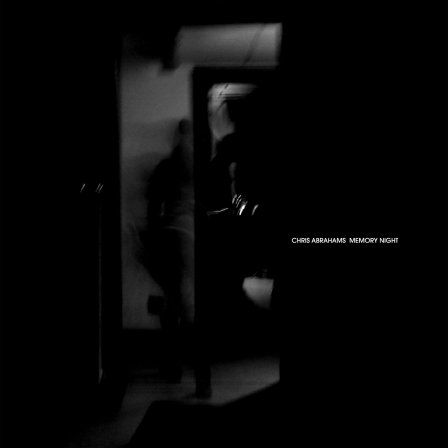“Within the framework of repetition and a trance-like atmosphere… we try to come onto stage with as empty a head and as clean a slate as possible, so that we can start with nothing - someone comes up with an idea, and we build on it very, very slowly from there… and once it’s up and running, and I feel like the best thing we can do, as musicians — for the music — is to remove ourselves from it as much as possible, and let the music take on a life of its own — let it slowly evolve.”
– Tony Buck (The Necks)
Chris Abrahams’ piano trio The Necks (Lloyd Swanton on bass, Tony Buck on drums) has set itself apart from many of its “jazz” contemporaries of the past 25 years with its progressive and minimalist approach to improvisation and, remarkably, an emphasis on rejection of prior agreement to material to be used in performance — that is, to get on stage and “make it up” as they go along. The group’s members dispel the possibility of ineffectual communication while improvising with their ability to collectively compose memorable works with an intentionally limited base of material. A testament to their staying power is their hold over the experimental improvisation community of Australia, from early releases like 1989’s Sex all the way through to later works such as Chemist (2006) and Silverwater (2009).
Abrahams is not a stranger to solo releases — his recording career is chock-full of solo and collaborative releases well outside the usual domain of The Necks’ musical attention. But Memory Night does position Abrahams’ creative self in a distinct zone away from the traditional musical language of The Necks. Where his acoustic performances feature interaction between acoustic instruments, Memory Night is a free-flowing, modern approach to piano — honed within the company of Swanton and Buck — and abstract electronic noise, ranging from found sounds (e.g., cash receipt machines) to tape hisses, high-pitched whines to writhing, screeching bowed sheet metal found toward the end of the first track, “Leafer” — and one really has to experience this to understand just how (brilliantly) terrifying this is.
Although there are hints of guitar and untuned percussion (which serve more to embellish the electro-percussive colors), the main acoustic focus on piano highlights Abrahams’ instrumental skill and his ability to meld it with other sounds in a way where neither dominates nor dulls the overall textures (be it lush with loops of bell chimes and screeches of metal, or thin with dull clicks from inconsequential sounds rendered striking in their combinations). On “Stabilized Ruined,” despite the piano being heavily processed and fragmented, it maintains its unique role within the composition, not suffering from sticking out or being pushed back.
[Visit full site to view media]
It is, however, worth pointing out that, compositionally speaking, while the instrumental language is noticeably different than experiments with The Necks, there are similarities in how elements are manipulated over time. In separating the growth and color of each sound individually, Abrahams morphs these grinding and churning beasts of tracks from one state to the other logically, in a manner that imbues the relatively abstract sound world with a tangible arc and a coherent experience. “Strange Bright Fact” juxtaposes roaring waves of static haze with delicate modal flows reminiscent of the solos of Keith Jarrett or even Brad Mehldau.
While the majority of the fragments and noises used throughout the album are of an indefinite pitch, Abrahams’ arrangements allow certain tonal components to meld together and form cohesive harmonic relationships that, in turn, add to a narrative flow of the tracks. It becomes clear that there’s a methodical dedication to detailing within what appears first to be radical abstraction.
One can’t ignore that Abrahams comes to this work with an enormous amount of experience, in jazz and in other genres usually not focused upon improvisation. Often a lifetime of creating music assumes itself as a character within compositions of any kind, from the most engineered of pop songs to the most inhospitable of aggressive, “dark” music. Yet within the pieces presented on Memory Night is a noticeable intent for some detachment from this norm, with equal attention being paid to musical craft; honing one’s ability to create works representative of oneself, individual and excitingly challenging to the audience.
It may seem unfair to bunch Chris Abrahams and The Necks together upon Abrahams’ solo releases, but the magnitude of their collective efforts does inform Memory Night — such a refined and calculated approach reveals itself as something so organic and meaningful, indeed “like the best thing we can do, as musicians.” Abrahams succeeds in letting the music take on a life of its own, guiding it to the start of its journey, and allowing it to bloom into something beyond its constituents — to evolve from its own creator’s history, one’s “memories,” and into its own harrowingly compelling being.
